Step three: the second layer
To solve the second layer we use the two-colored pieces that do not contain the yellow color. In the starting position, they are either on the top or on the second layer, but usually at the wrong position.
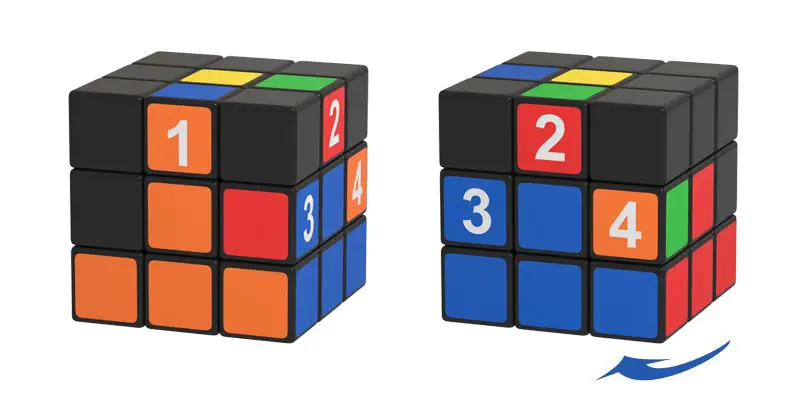
DO NOT HAVE THE YELLOW COLOR
We advise you to begin with the piece the positioning of which, you will also put into the right position (on the upper face) the next piece that does not have the yellow color. The piece in the front face is rotated (if necessary) to the face that has the same central color. In this example, it is the orange-blue (↑ 1) that is at the right starting position and with matching colors, and the red-green (↑ 2) one needs rotation to be put on the red face. The upper color of this starting two-colored piece decides on which of the two algorithms will be used for the rotations.
If the upper color of the piece that we want to solve is identical to the color of the right face, then we apply the following algorithm:
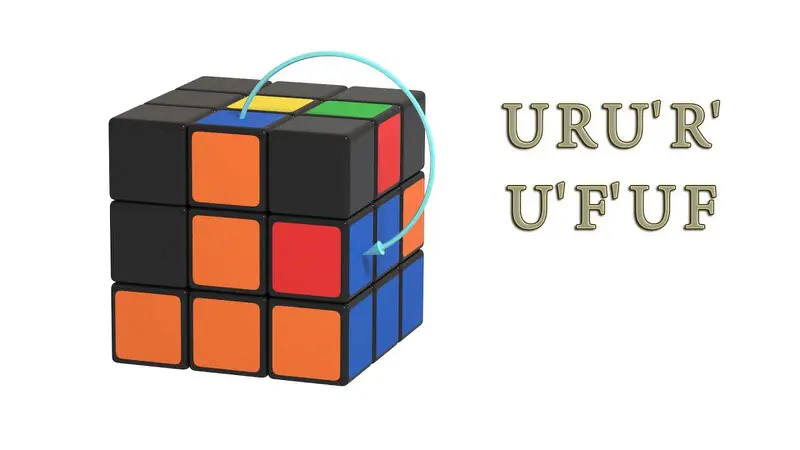
If the upper colour of the piece that we want to solve is identical to the color of the left face, then we apply a different algorithm:
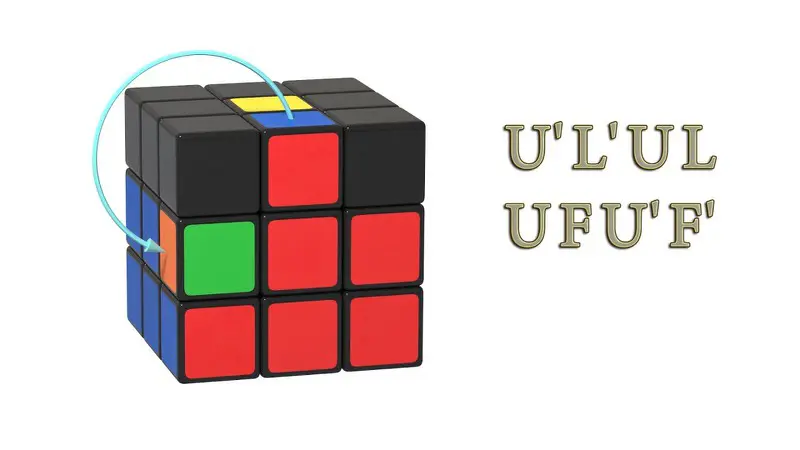
However, it may happen that we have a problem if the top layer doesn’t contain two-colored pieces that do not have the yellow color, and we still have more unresolved pieces in the second layer.
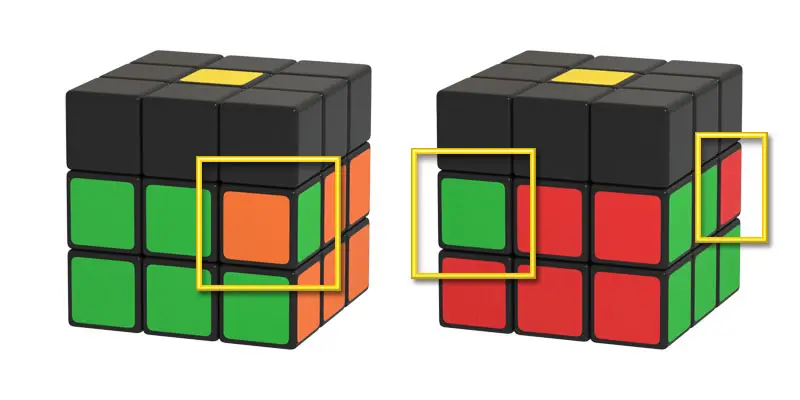
Even then, we use the same, above mentioned rotations – algorithms, but with the aim to position the problematic pieces from the second layer to the top one – the third layer. The choice of the algorithm is, therefore, the same as with positioning the pieces from the layer three to the layer two! Having positioned the problematic piece to the upper layer, we drag it to the correct starting position and again use the rotations to put it back to the correct position (using the adequate algorithm).
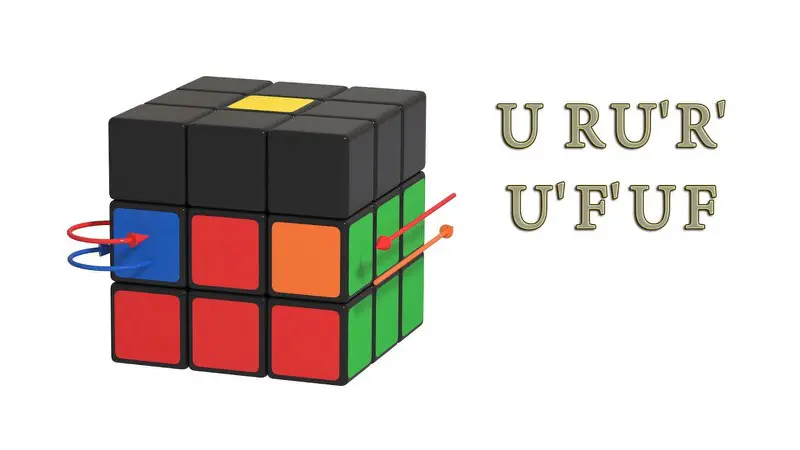
Only in this cases - when there is no two-coloured pieces which contain yellow colour in the top (third) layer - you can (but you don't necessarily need to) skip only the first rotation of the upper layer (U), since it doesn't influence a correct solution.
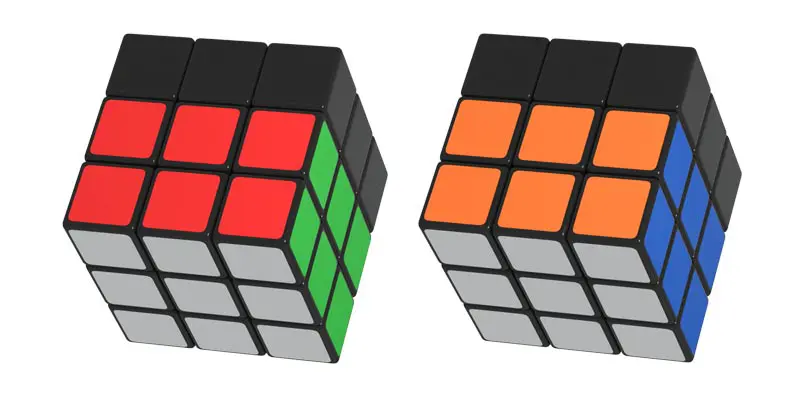
Next step No. 4 - Learn to form the yellow cross on the Rubik's Cube